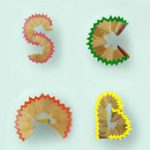
Benches – By @laurenbodiam

By Lauren Bodiam
Benches
I’m going to talk to you about benches. I’m sat on a bench right now as I’m writing this and I’m on my lunch break at work so i don’t have too much time.
I have recently finished reading nudge (one of the books on the reading list) and it made me look a bit harder and made me notice how all design ‘nudges’ the way we behave and interact.
Benches are designed for public spaces. Its a design that has shifted the way we behave in public. Benches allow people to sit down for a period of time in a open space. I wonder what life would be with out them, would we be more inclined to sit on the ground? I believe benches play upon herd behaviour. This is where we conform to a set of behaviours displayed by the majority. It is a social influence which i believe is often re enforced when it comes to benches. There have been times (and I’m sure more to come) where instead of finding a bench to sit upon, I sit on the ground. These moments are the moments when I feel death stares from on lookers, their eyes meet mine in moments of disgust. I also find in these moments that i too am the only person doing this while others eyes wander in hope of finding a bench so they don’t under go the social wronging like me. Often you notice in standing group scenarios herd behaviour tends to happen regularly. Each individual is looking around waiting for someone else to sit down on that dreaded floor, because who likes standing? Once that one person sits, thats it you have a whole domino effect of people sitting in the relief of not having stand. But would this behaviour happen on their own?
This bench I’m sat on right now is designed with a back, allowing a longer stay. Having a back to the bench changes our positioning we can recline better and is more comfortable for a longer period of time. Some benches are backless like the ones i have in the staff room at work. Backless are designed for shorter stays and allows people not to get too comfortable on their lunch break (unfortunately). It could be argued that benches with backs nudge our behaviour more as they are designed for us to sit a certain way and stop us from facing a certain direction. Dividers and arm rests are sometimes put in to place to make sure we take up a certain amount of room and to deter people from lying down. In 2014 there was a surge of spikes being put up as design to deter people from lying down and sleeping in window ledges. This spiked uproar for its morality in design as it was introduced to make sure people couldn’t physically lie down or rest. Benches can hold the same morality in their design, and were even implemented before. Although subtle the majority of benches with dividers were specifically designed to stop homeless people sleeping, anchoring them to find other solutions like window frames and outside store entrances.
Benches are chosen for us, its placement is designed by someone else. The location of benches has an impact on how we make decisions in chosen locations. Commonly benches are located at parks, shopping centres, monuments and train stations. A bench in a park may allow children to stay longer at the park, as their parents have a place to sit and relax to feel comfortable. Benches
near monuments and areas of natural beauty aid focus as the bench seats you to view the point it wants you to see, arguably it is the best view of that area.
In conclusion benches are a piece of design, constructed to with a purpose that suits its environment and its designer. It is a piece of design that does not necessarily favour the people who may use it, it aids what we can see, how long we sit down for and how we are able to use it.
I wonder what benches think of their design.










